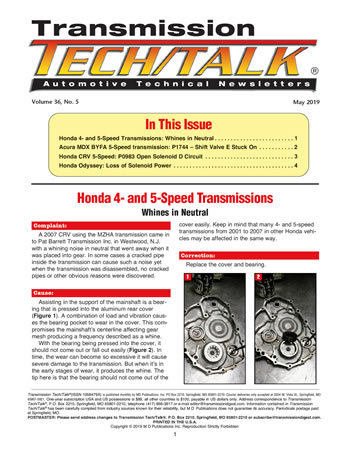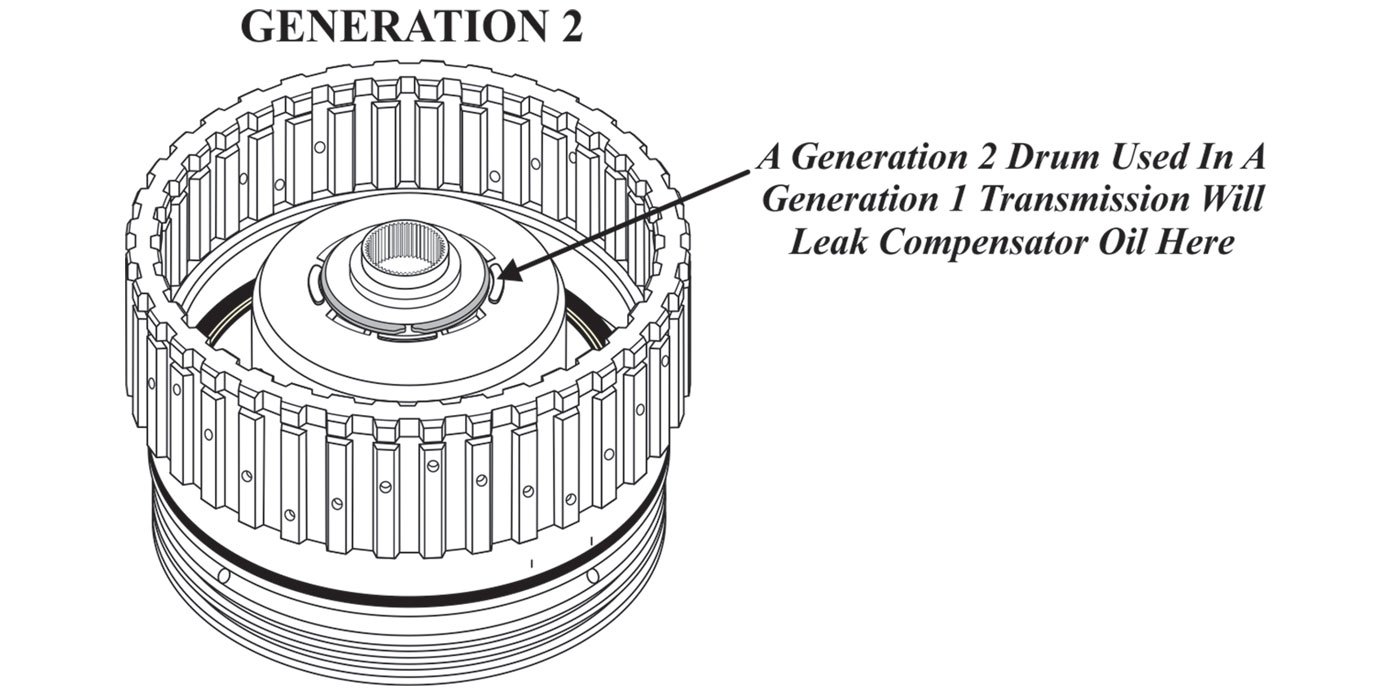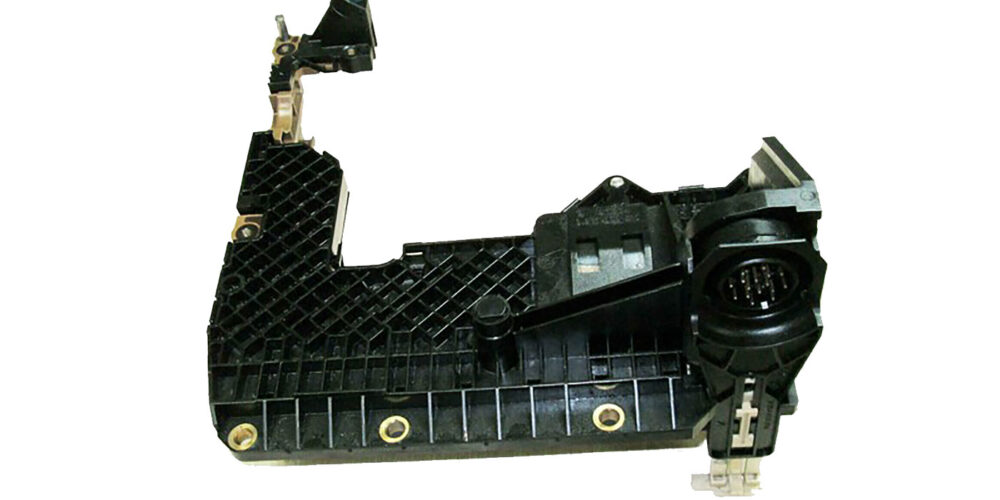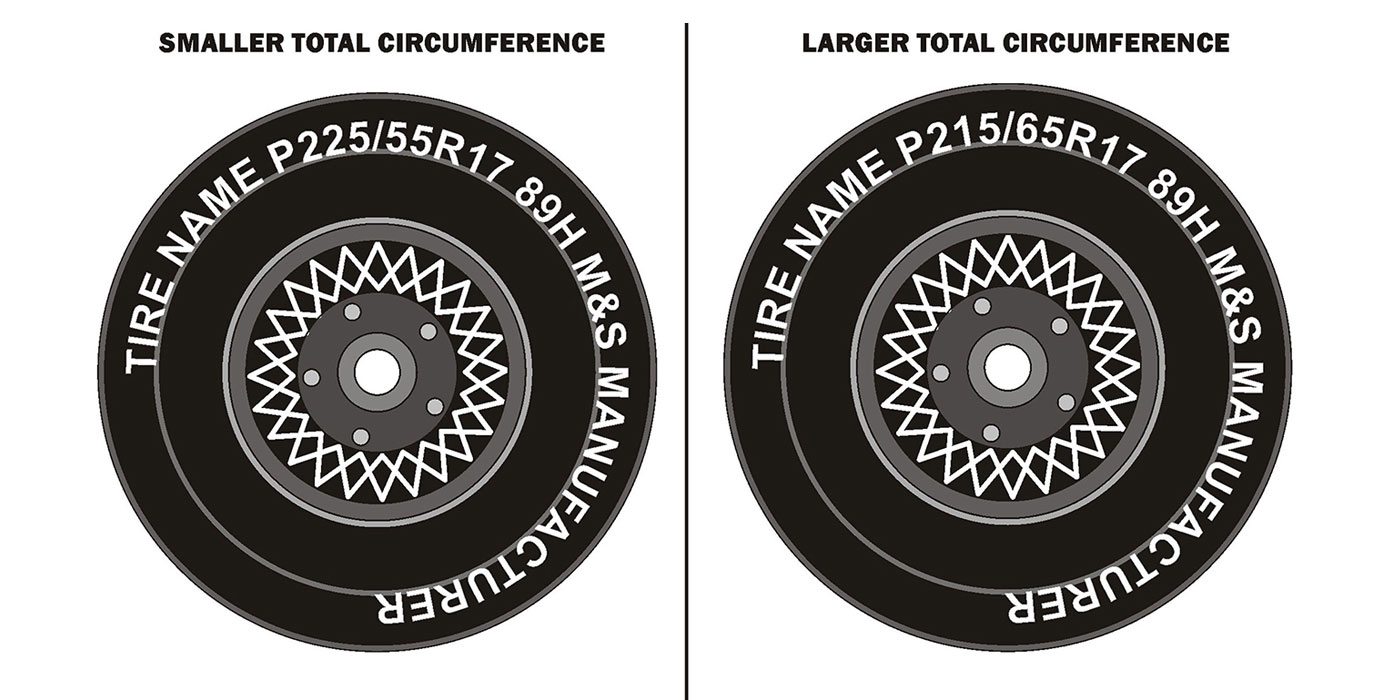



A 2007 CRV using the MZHA transmission came in to Pat Barrett Transmission Inc. in Westwood, N.J. with a whining noise in neutral that went away when it was placed into gear. In some cases a cracked pipe inside the transmission can cause such a noise yet when the transmission was disassembled, no cracked pipes or other obvious reasons were discovered.

Assisting in the support of the mainshaft is a bearing that is pressed into the aluminum rear cover
(Figure 1). A combination of load and vibration causes the bearing pocket to wear in the cover. This compromises the mainshaft’s centerline affecting gear mesh producing a frequency described as a whine.
With the bearing being pressed into the cover, it should not come out or fall out easily (Figure 2). In time, the wear can become so excessive it will cause severe damage to the transmission. But when it’s in the early stages of wear, it produces the whine. The tip here is that the bearing should not come out of the cover easily. Keep in mind that many 4- and 5-speed transmissions from 2001 to 2007 in other Honda vehicles may be affected in the same way.


Replace the cover and bearing.



A 2007 Acura MDX 3.7L V6 using a BYFA 5-speed automatic transmission came in to the shop with DTC P1744 stored in memory. The definition of this code is as follows: Problem in Shift Control System; Shift Valve E Stuck ON. Many manufacturers refer to shift solenoids as a shift valve. Given the definition of it being “Stuck On,” the tech goes to locate shift solenoid E for inspection and no such solenoid is found.

Shift Solenoid A (a normally vented solenoid) and B (a normally applied solenoid) operate a valve in the valve body called, “Shift Valve E” (Figure 3). When both solenoids are off, the valve strokes open by shift solenoid B pressure. When both solenoids turn on, shift valve E closes by both spring pressure shift sole-noid A pressure.
Shift Valve E needs to stay in the closed position for first, second and third gear. Shift Solenoid A assists the spring in keeping the valve closed in second and third gear. Shift solenoid B strokes the valve in fourth and fifth gear. If the valve does not stroke, fifth gear will be unattainable. If the valve is stuck in the stroked position, the vehicle will take off in fifth gear instead of first. Third gear is affected also should this valve be stuck in the stroked position.

Shift valve E is to remain closed for first, second and third gears. Shift solenoid A turns on in second and third gear to assist spring tension in keeping the valve closed. Note: Shift Solenoid A is a normally vented solenoid which when energized will supply pressure to its respective circuit. Shift solenoid B is a normally applied circuit operating in the opposite manner as shift solenoid A. When it turns on, it will prevent pres-sure from entering into its respective circuit.


Shift valve E needs to be stroked open for fourth and fifth gears. For this to occur, both solenoids turn off. Since shift solenoid A is a normally vented sole-noid, pressure is blocked from entering it respective circuit. With shift solenoid B being a normally applied circuit, pressure is allowed to enter into its respective circuit. Solenoid B pressure is able to overcome shift valve E’s spring tension forcing the valve to stroke open.

The most common cause producing this code is a stuck shift valve E located in the secondary valve body next to the manual valve (Figure 4).
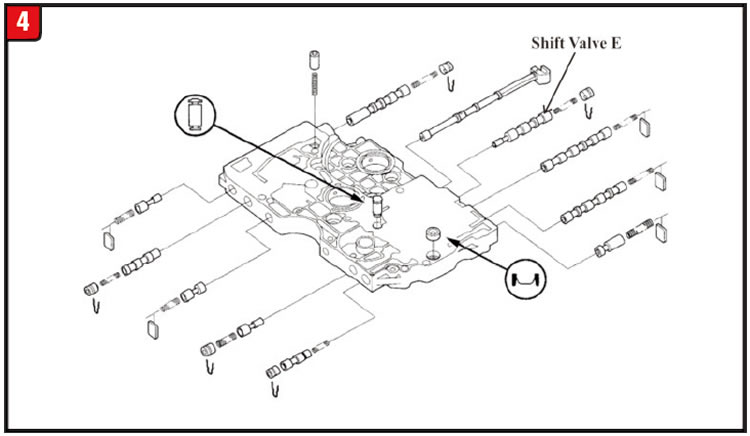
Sometimes Shift Solenoid Valve B mechanically fails (Figure 5).
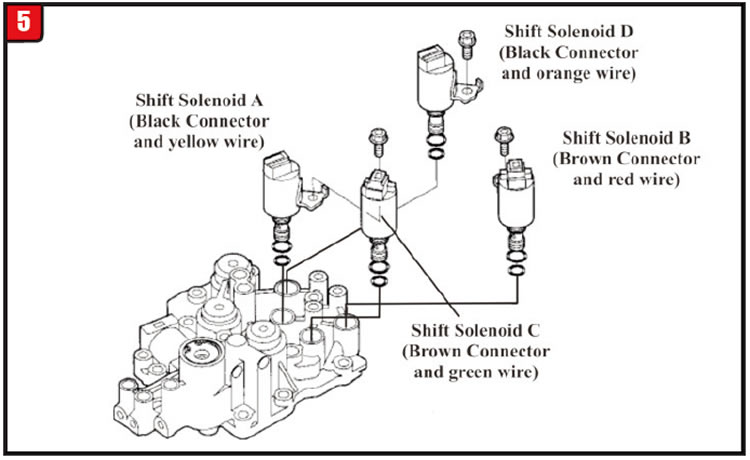
When this solenoid is OFF, it applies pressure to its respec-tive valves. Shift Valve E is one of them. When this solenoid turns ON, it blocks pressure from stroking its valves. Shift Solenoid Valve A works opposite. In fact, Shift Solenoid Valves B and C are Normally Applied Solenoids while Shift Solenoid Valves A and D are normally vented solenoids.
- The Yellow wire connector goes to shift solenoid valve A.
- The Green wire connector goes to shift solenoid valve C.
- The Red wire connector goes to shift solenoid valve B.
- The Orange wire connector goes to shift solenoid valve D.




A 2005 CRV using a 2.4L engine with an MKYA 5-speed transmission came in to Delaware County Transmission in Havertown, Pa. with severe damage. A replacement transmission was ordered and installed. After which, a P0983 code for an open solenoid D circuit is immediately stored upon start up. When an inspection was made to check the circuit it was discov-ered that solenoid D was missing.

The replacement transmission arrived with the identification tag on top of the transmission missing. But the transmission looked the same as the original and it bolted up to the 2.4L engine with no issues. Nor were there any problems with speed sensors and electrical connections. But with the discovery of a missing solenoid D, it was also discovered that they inadvertently installed the wrong transmission. What they did receive was a unit from a 2004 CRV 2.4L, which is an MCVA transmission. The 2004 is a 4-speed unit with four solenoids while 2005 and newer is a 5-speed unit with five solenoids.

Install the correct transmission.
There are some 4-speed harnesses where terminal 8 is empty. This can be a quick way to identify a 4-speed unit from a 5-speed unit should the ID tag be missing. But if there is a pin at terminal 8, the cover will need to be removed to see how many solenoids are present. Pin 4 in the 8-terminal connector is empty for both the 4- and 5-speed units (see figures 6 and 7).
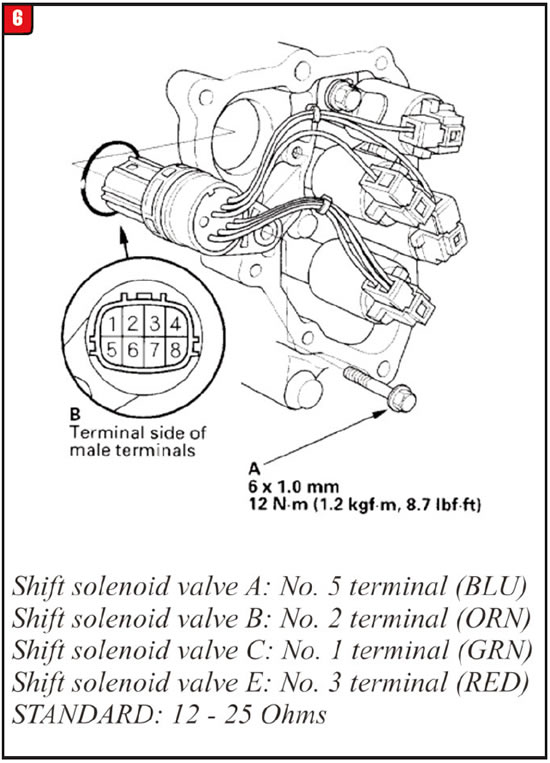
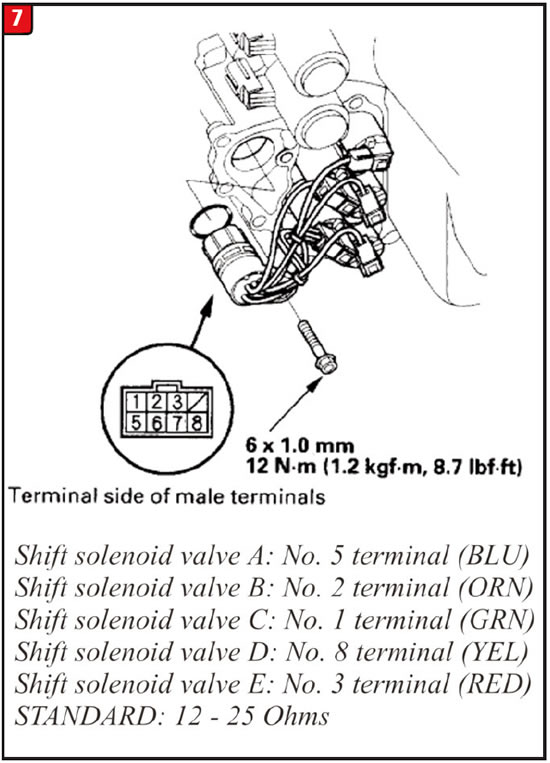



A 1999 – 2001 Honda Odyssey comes in with a P1753 indicating an electrical circuit problem with the TCC solenoid circuit (other solenoid codes may also be stored). After running the O.E.M. suggested diagnostics, which leads the technician to checking the solenoids and the related wiring where it finally states: “Substitute a good known PCM.” When the technician checks the TCC Solenoid circuit at the time TCC should be commanded ON, no power was being sent to the solenoid. As a side note a P1298 for the ELD unit was also stored.

Instead of replacing the PCM which would seem to be the likely suspect, the technician consulted a wiring diagram and noticed that solenoid power came from a fused circuit to the PCM and then out of the PCM to the solenoid. The wiring diagram indicated the #6 fuse in the under-dash driver side fuse box is the solenoid power supply and this fuse was blown. After replacing the #6 fuse, it didn’t take very long for it to blow again.
There are some fuse numbers molded into the fuse box housing. The #6 fuse can be seen in Figure 8, which is the 15-amp fuse that is blowing.
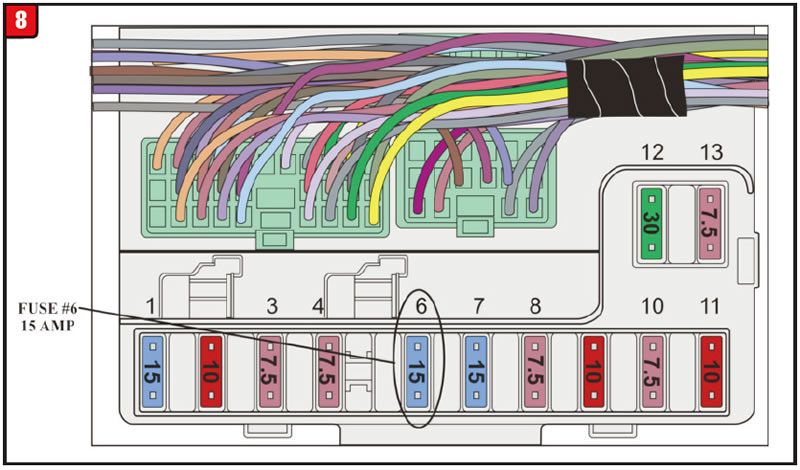
Looking at the inside fuse box cover, it should identify this fuse as: “ECU/Cruise Control.” This power supply wire is located at PCM in connector D5 for 1999 to 2000 models and in connector B24 for 2001 models (Figure 9).
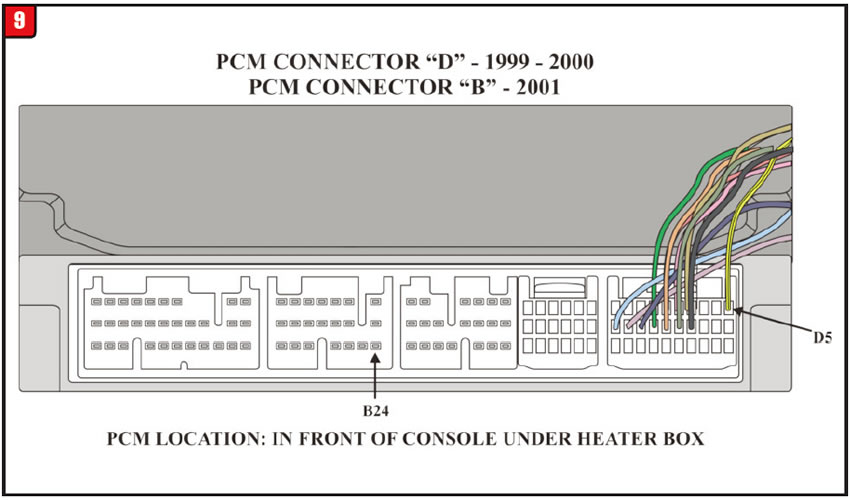
The PCM location can be seen in Figure 10.
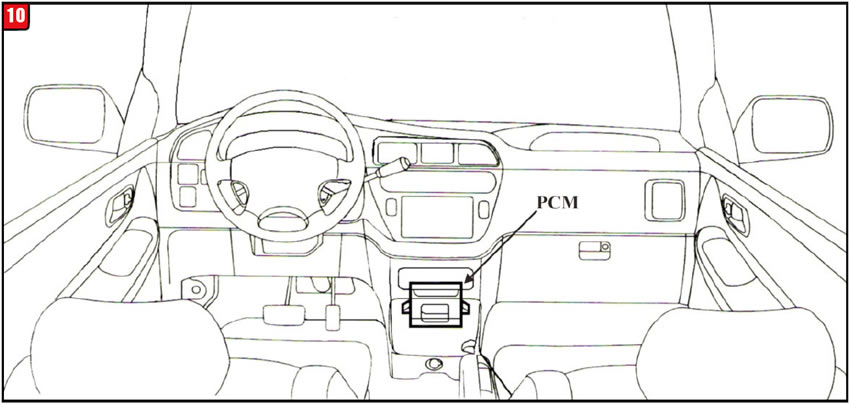
The #6 fuse not only supplies power to the PCM for the transmission solenoids but to the ELD Unit also, which is why code P1298 set. This circuit also powers up the EVAP System, Cruise Control, Engine Mount Control System and the Navigation System -Vehicle Speed Pulsar.
The component that caused the #6 Fuse to blow was the Vehicle Speed Pulsar (VSP) Sensor. This sensor is located where a VSS would normally be in these vehicles. This type of sensor is used ONLY if the vehicle has the optional navigation system. The sensor and it’s wiring have shorted which caused the #6 fuse to blow. Use the numbers from the old VSP Sensor to search for a new one as shown in Figure 11.

The wiring diagram and PCM connector terminal identification for the 1999 to 2000 models can be seen in Figure 12.
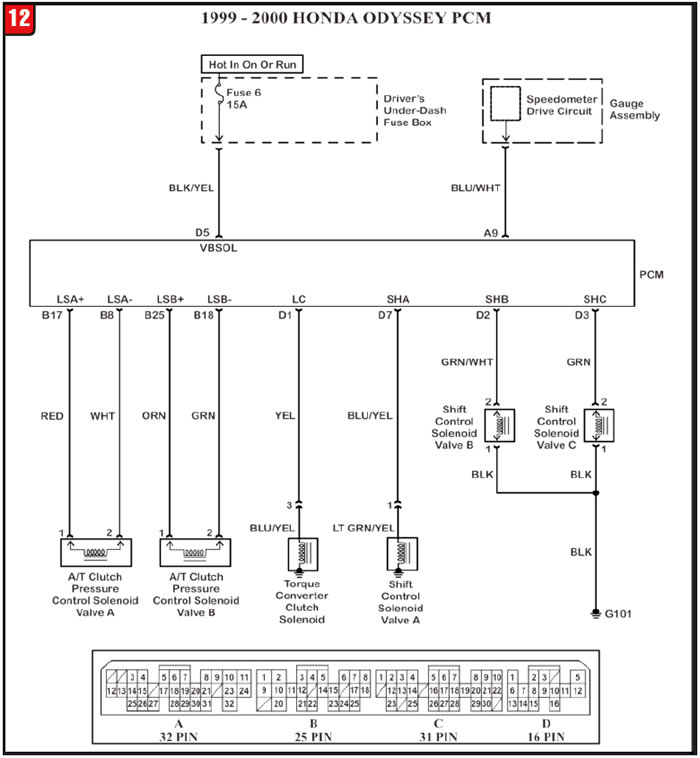
The wiring diagram and PCM connector terminal identification for the 2001 model can be seen in Figure 13.
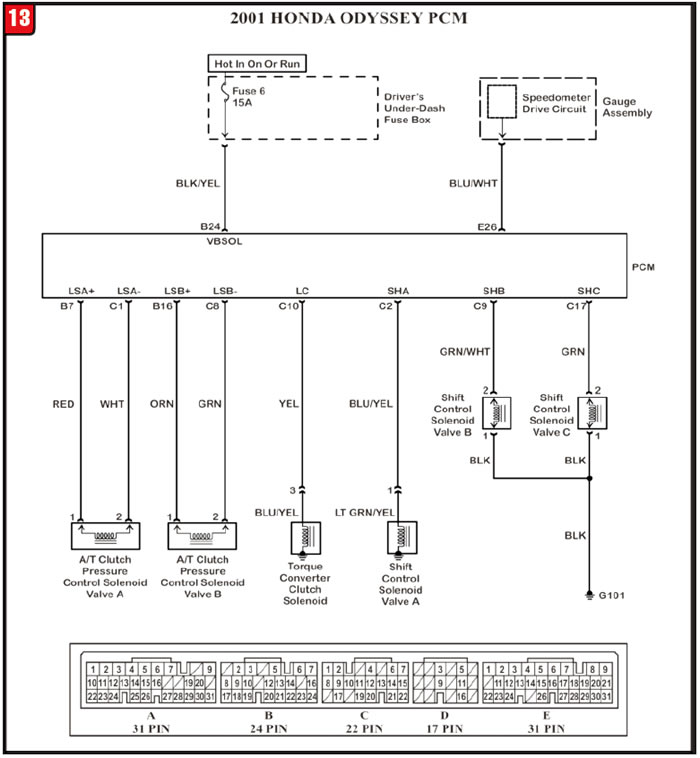
The wiring diagram for the 1999-2001-model navigation system showing the vehicle speed pulsar can be seen in Figure 14.
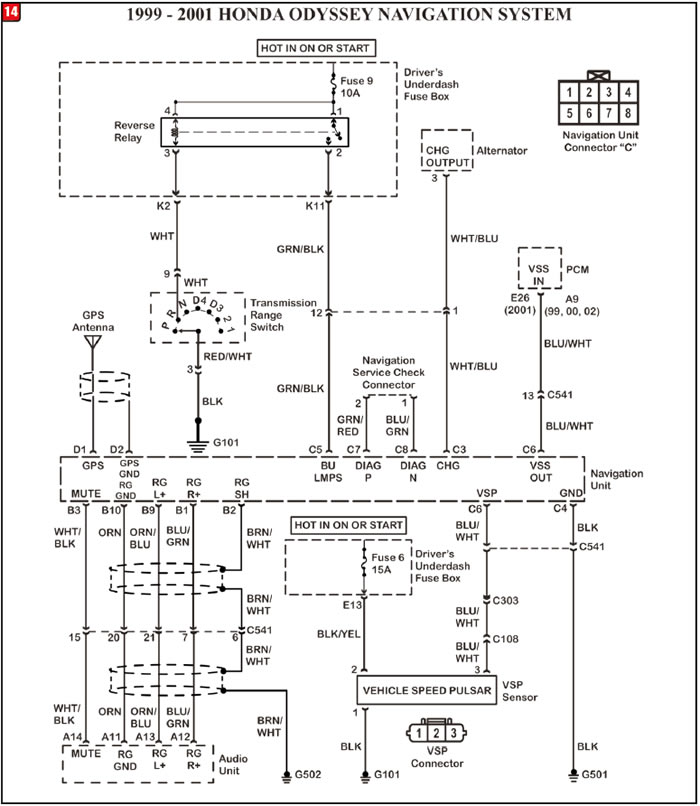
Notice that the VSP Sensor is providing the vehicle speed signal for the PCM to distribute where needed.
If the vehicle does not have a navigation system, then the vehicle speed signal will be provided by the PCM using Countershaft Speed Sensor input.

Replace the VSP Sensor and repair it’s wiring, which should allow the related trouble codes to be erased and restore solenoid power to the PCM.


May 2019 Issue
Volume 36, No. 5
- Honda 4- and 5-Speed Transmissions: Whines in Neutral
- Acura MDX BYFA 5-Speed transmission: P1744 – Shift Valve E Stuck On
- Honda CRV 5-Speed: P0983 Open Solenoid D Circuit
- Honda Odyssey: Loss of Solenoid Power

